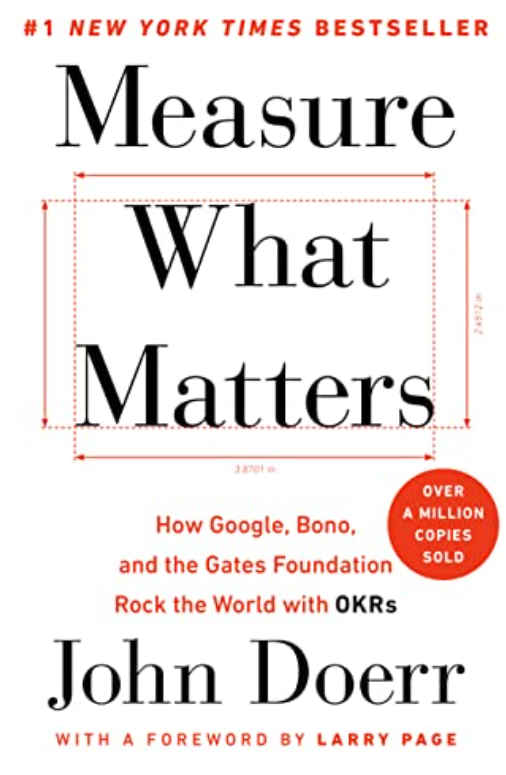Maximize Your Potential in 2023: Tips for Setting and Achieving Personal and Professional Goals
Hoping to get in shape? Learn a new skill? Save money? Or just, go to bed earlier?
You’re not alone. And, the good news is that there are tools that can help you reach those goals.
Wharton professor, Katy Milkman, explains how you can use science-backed methods to turn New Year resolutions into reality. And, NextGen Center Founder Brian Alvo sheds light on what individuals and companies get wrong about goal setting and what to do instead.
Why is goal-setting so popular in the New Year?
“It's a new beginning for people. It's a fresh start. It's hope; it's optimism with motivation.” - Brian Alvo
The New Year also marks the close of one chapter, the start of a new one. It is a more motivating moment because it signals a new beginning. According to Milkman, Mondays, the start of spring, and birthdays are examples of fresh start moments that fill us with hope about what we can do.
What do individuals and companies get wrong about goal setting?
The problem arises because of how we set goals.
“So most of us will choose a goal that's very abstract and long term: like I want to get in shape or I want to meditate more regularly. The next thing you need to do is actually break that down and figure out what's the bite-sized piece you can do this week, and when and where are you going to be able to execute on that.” - Katy Milkman
If we set goals that consider how much time we’re going to commit to a goal each week vs. the course of the year, we’re more likely to make progress.
Most people think about goals transactionally. So that's the big challenge that people in companies face. And the truth is when it comes to change, it's a process, adds Alvo.
We often don't:
Invest the time to set goals
Understand the motivation underneath a goal
Understand the driving force for change
As for leaders, they sometimes need help understanding the conditions we need to set goals, pursue them, and make change happen.
In other words, we need to shift from a transactional mindset to a "way of being."
Dig into the impact achieving your goals will have on your life and business.
For companies, consider the following:
How will these changes impact the people who work for the company?
Their families? Partners?
The entire system and landscape? Because goals are part of our bigger vision.
"We also need to put metrics and accountability in place to ensure we're measuring our progress. A good way to do this is to break goals into bite-sized chunks." - Brian Alvo
Some companies do this and start strong, but soon they "bite off more than they can chew."
Stay focused. Have 1-3 primary goals.
Frameworks and resources to help you set goals
Source: Amazon
“Atomic Habits: An Easy & Proven Way to Build Good Habits & Break Bad Ones.” Published in 2018 by James Clear, a leading expert on habit formation, the book provides practical ideas on how to form good habits, break bad ones, and improve systems so you can stay motivated and on track.
Source: Amazon
“Measure What Matters” by John Doerr, a venture capitalist who funded Intuit, Amazon, Google, Twitter, and other tech companies, uses “OKR,” which stands for “objectives” and “key results.” OKRs help focus effort and nurture collaboration, unifying efforts across teams and creating happier employees and stronger companies.
In 1981, George T. Doran, a consultant, wrote: "There's a S.M.A.R.T. Way to Write Management's Goals and Objectives."
The goal of the publications was to remove the confusion and information overload by helping managers and supervisors remember one simple acronym, which breaks down into:
Specific: select a specific area for improvement.
Measurable: quantify how you'll indicate progress.
Achievable: specify who will do it.
Relevant: state what you can achieve with available resources.
Time-bound: specify when you can achieve the result.
Over the last three decades, SMART goals have been expanded to SMARTER:
Evaluated: an appraisal of a goal to assess the extent to which it has been achieved.
Reviewed: reflect and adjust your approach or behavior to reach a goal.
While it’s helpful to have frameworks, there isn’t a silver bullet solution. Instead, these resources offer great context and ideas.
What it comes down to is creating tangible goals that are clear on the:
Motivation
Impact
Once that’s clear, set accountability metrics to ensure you achieve what you want without falling into old patterns.
Follow the NextGen Center and Brian Alvo on LinkedIn for more goal-setting strategies to cultivate deeper self-awareness.
Learn more about the Foundation for Effective Leadership Program.






